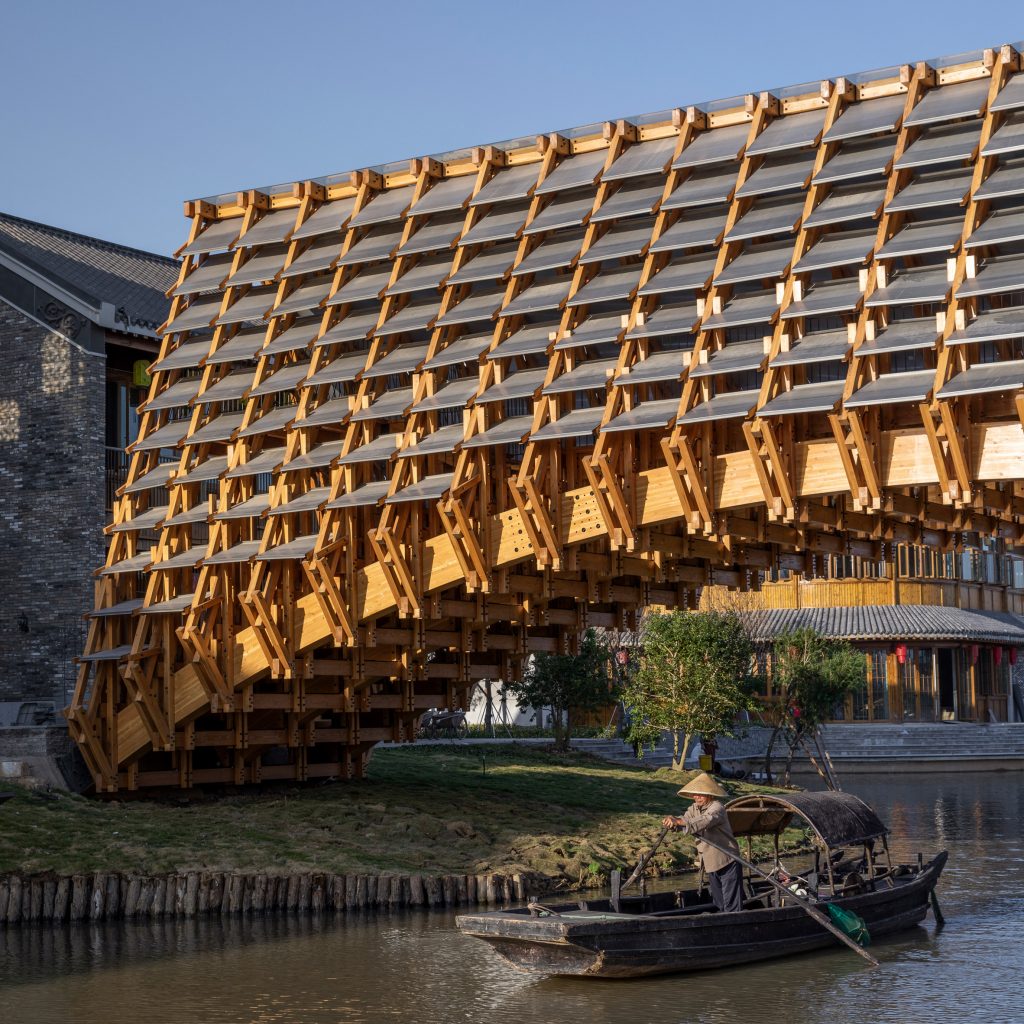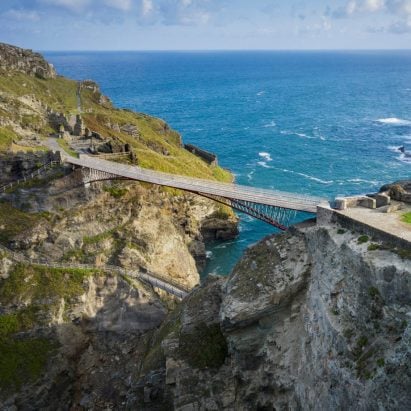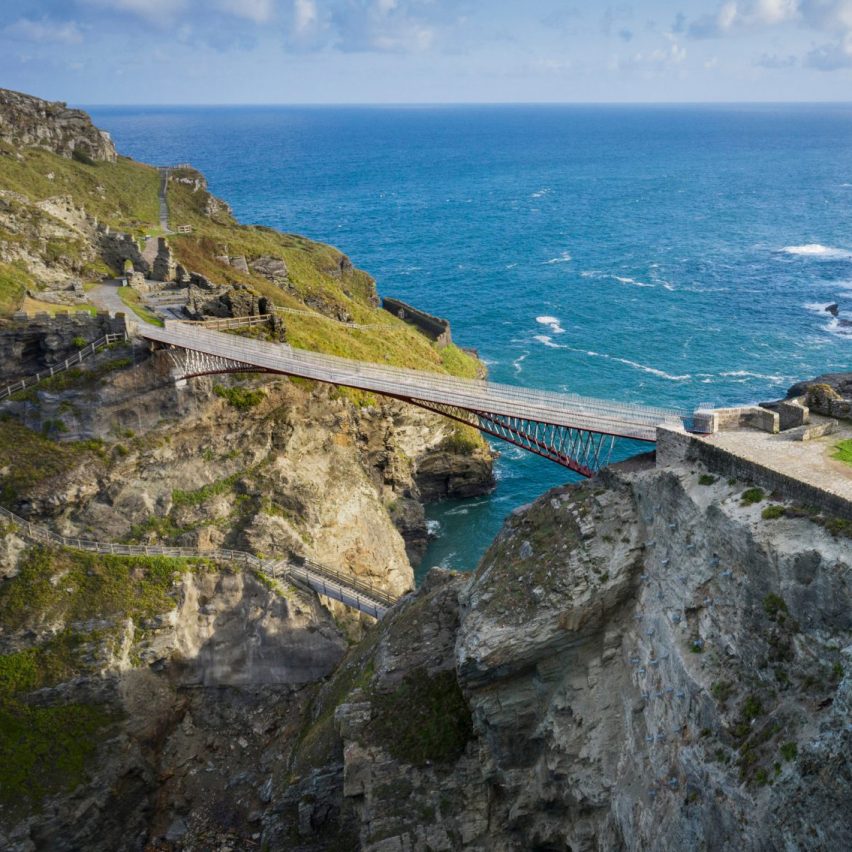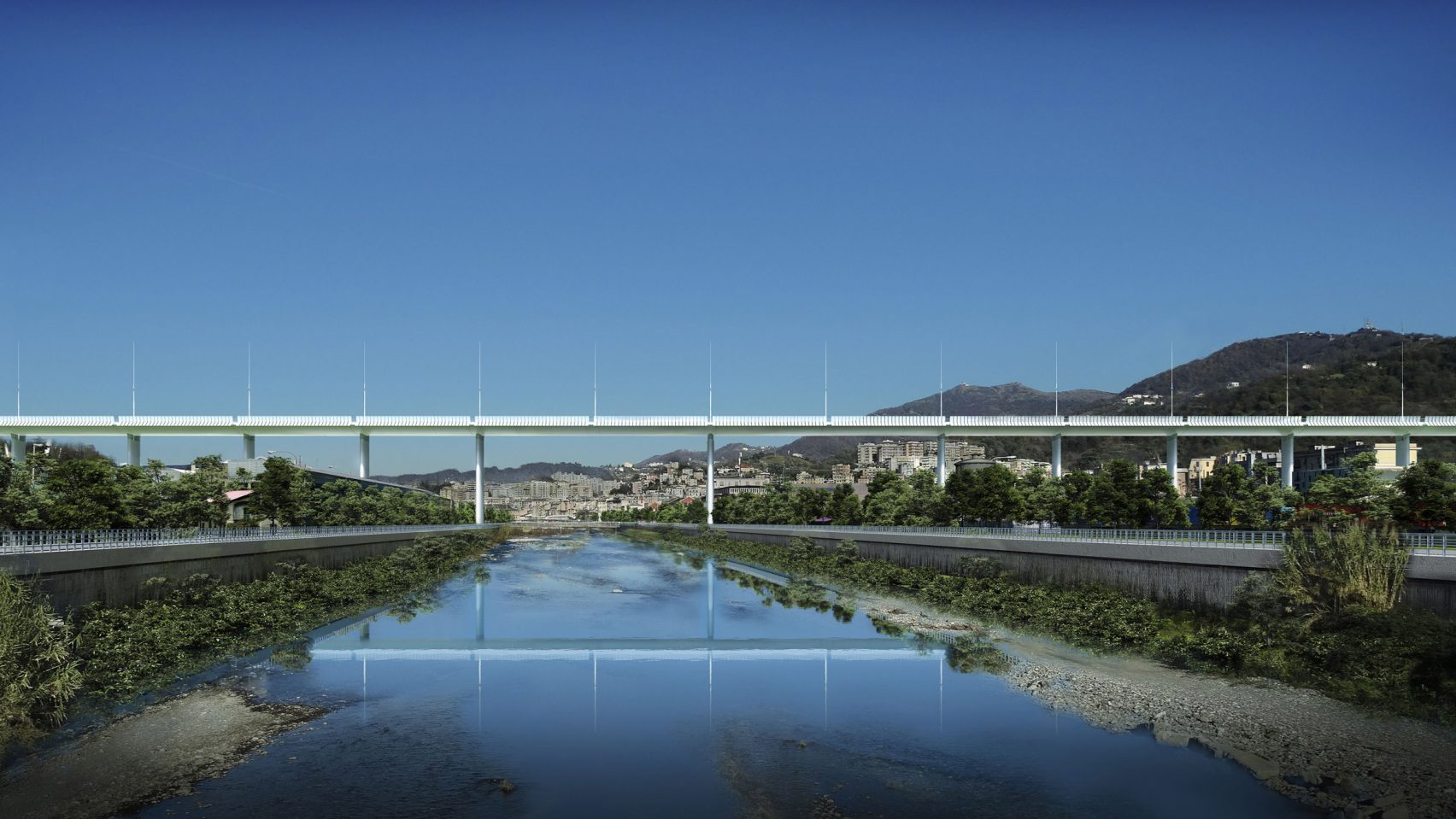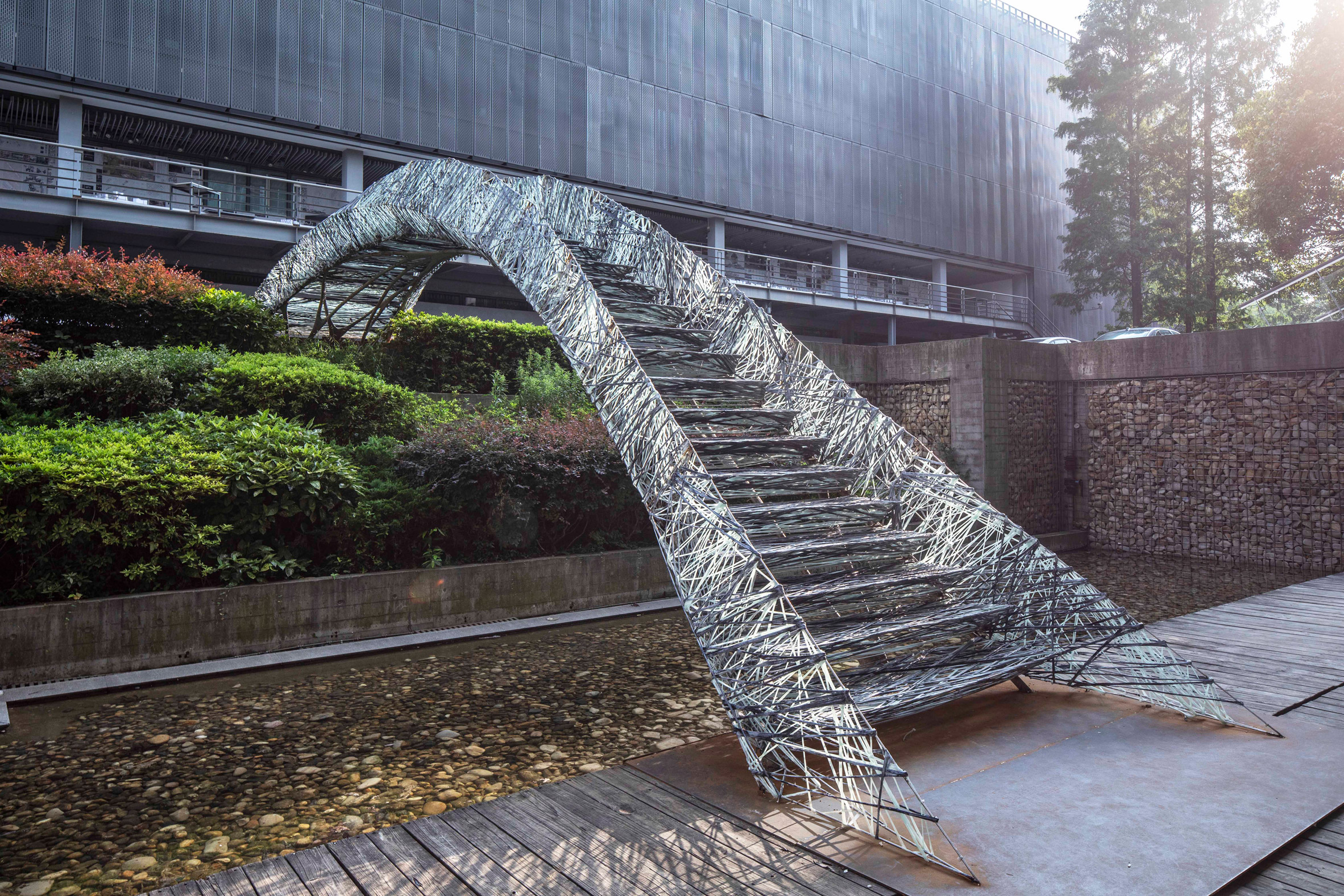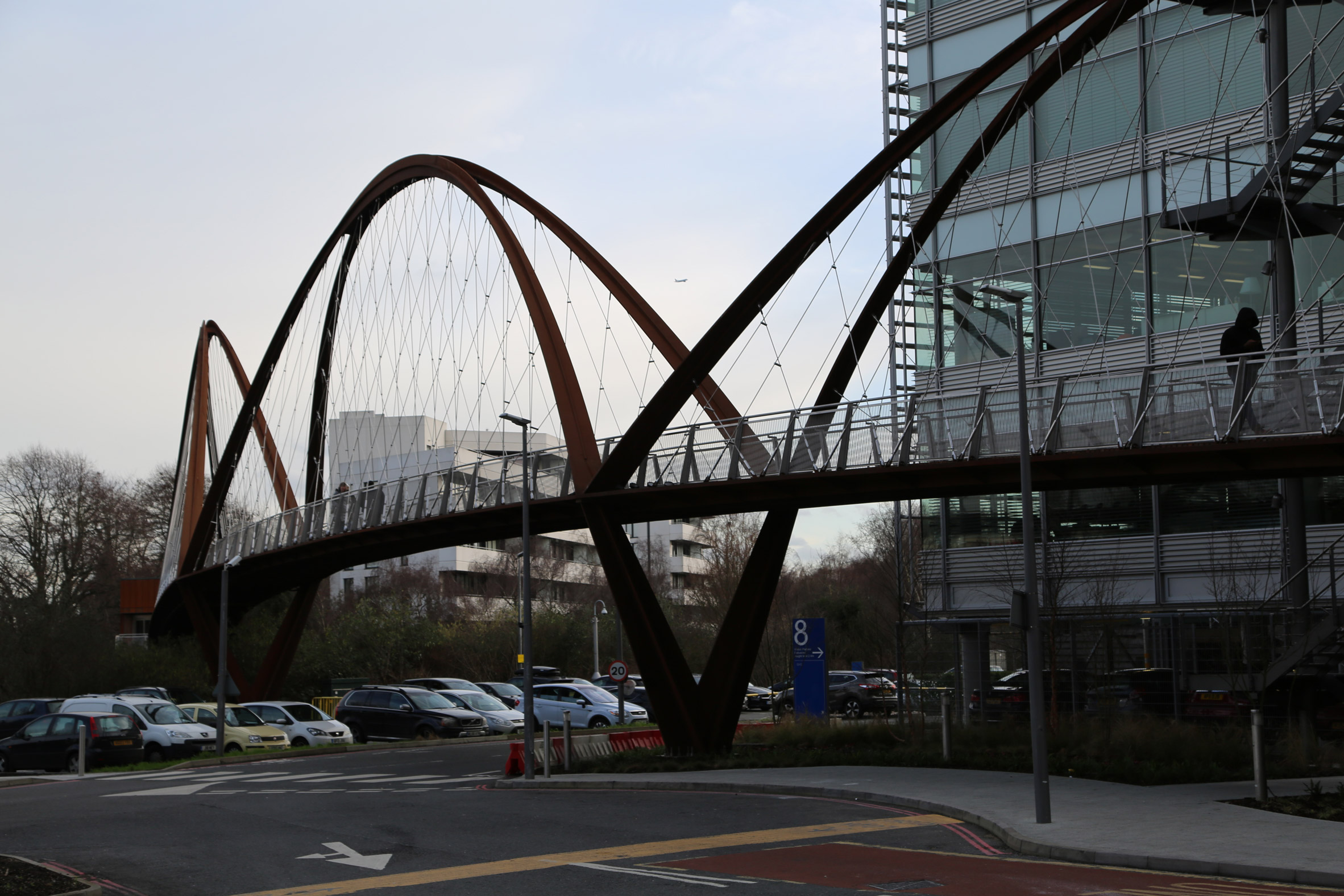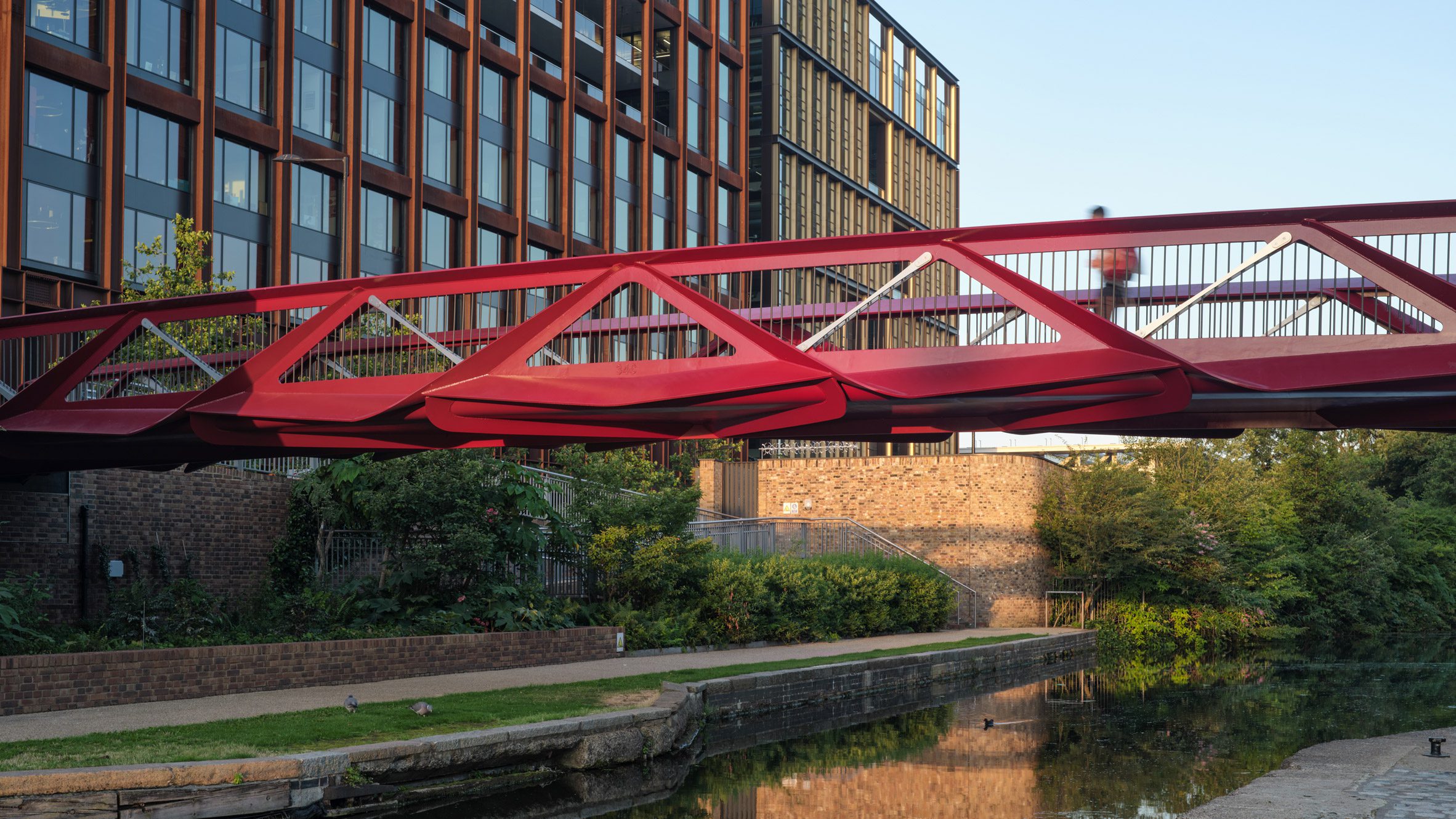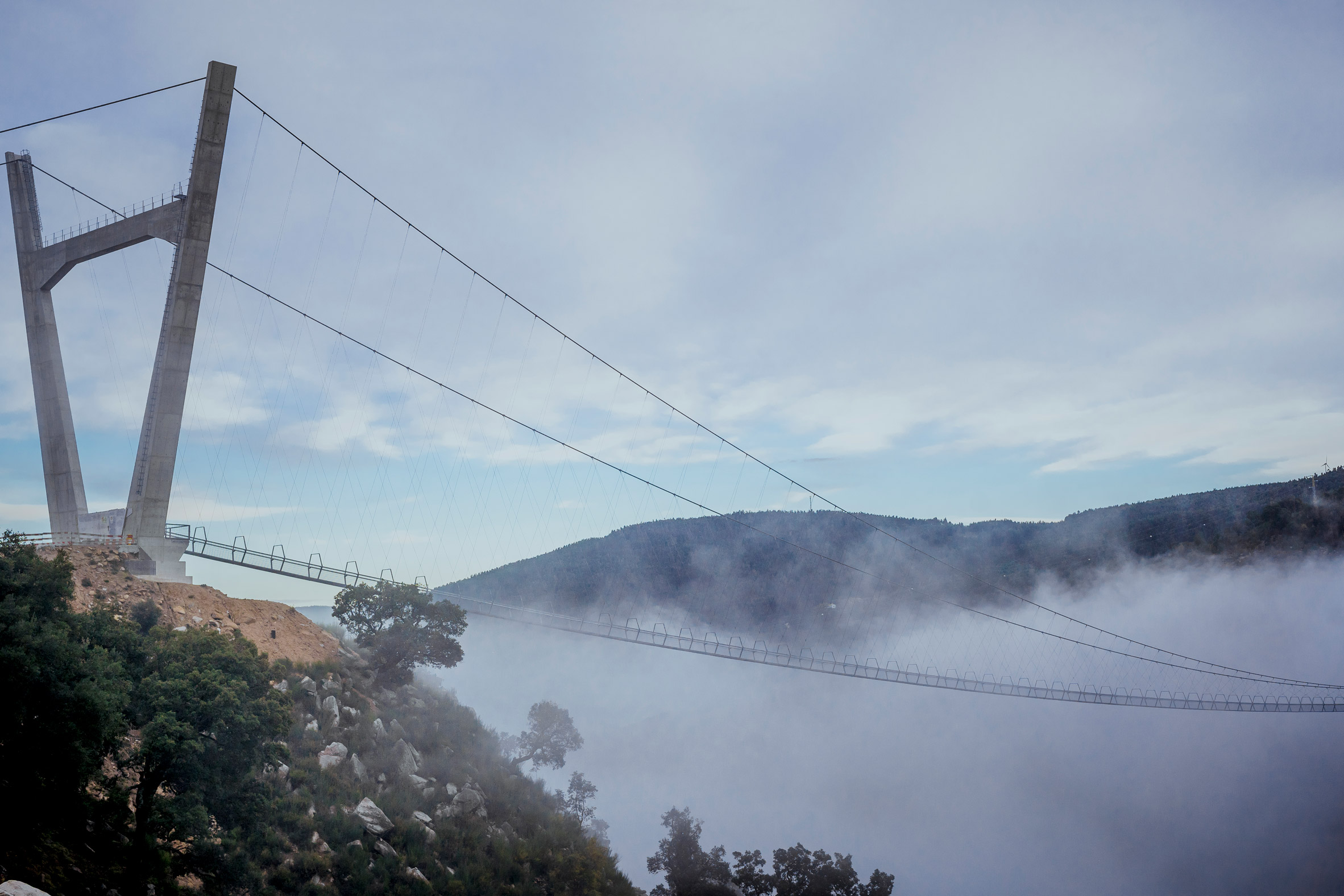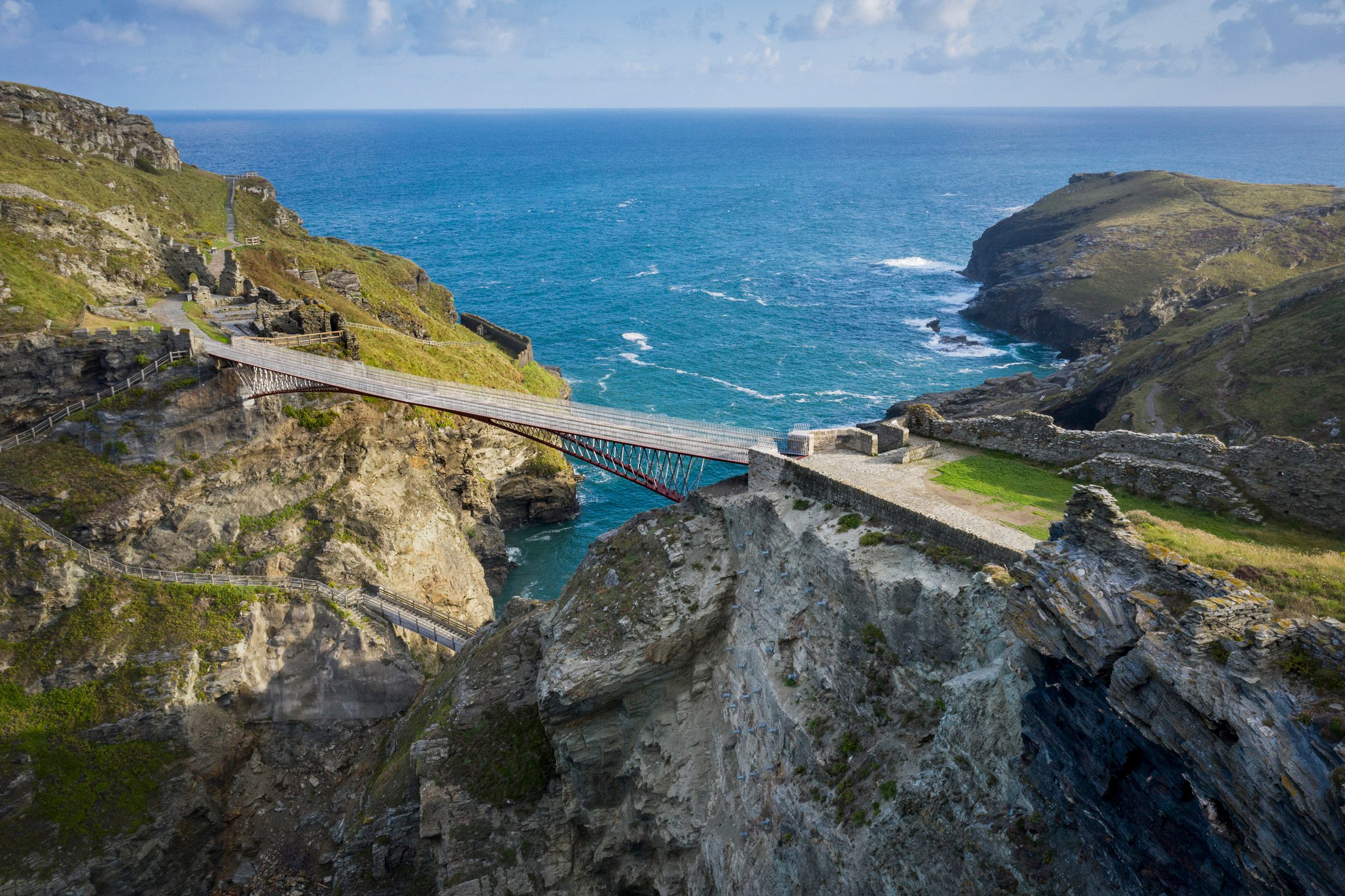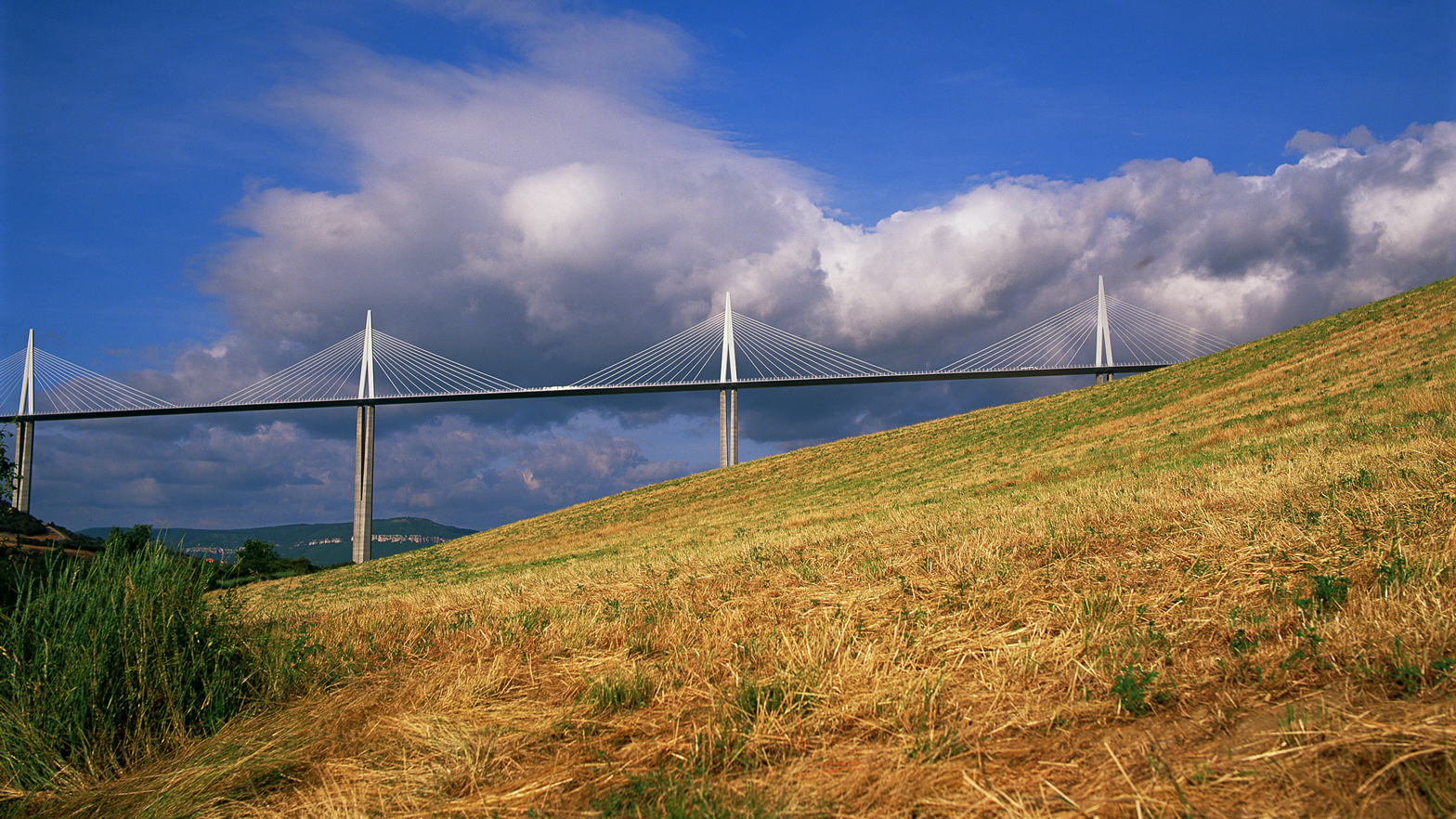
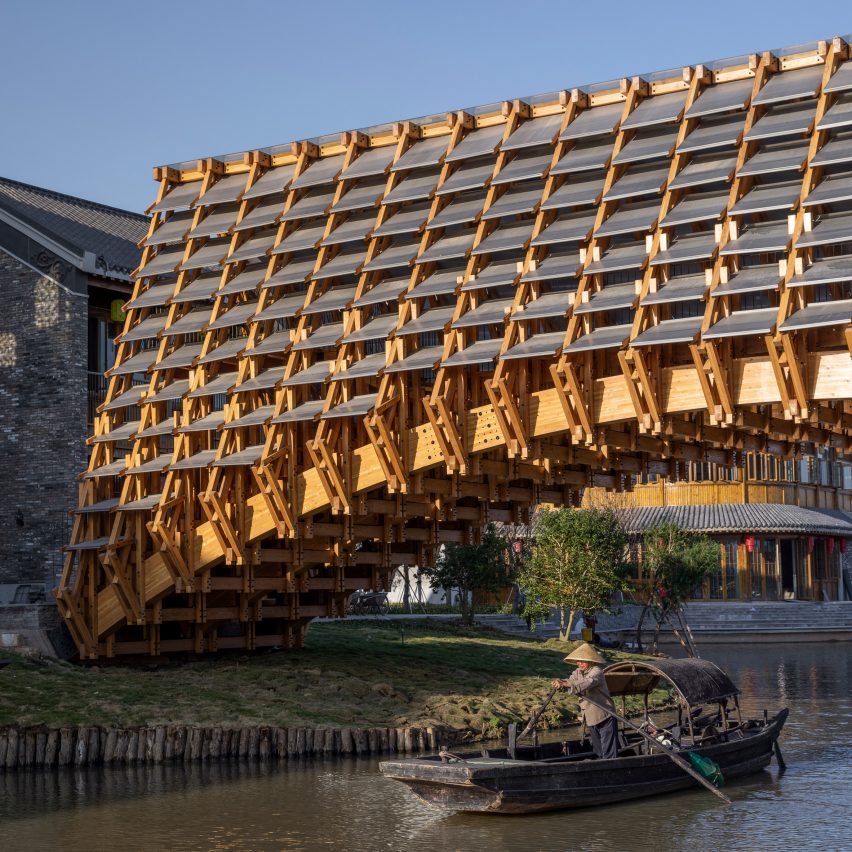
Hundreds of wooden elements are bolted together to form Timber Bridge in Gulou Waterfront, the latest project by Chinese architecture office LUO Studio.
The 25-metre-long bridge is located in Gulou, a water village in Jiangmen, China. This unusual manmade landscape, formed of a network of waterways and ponds, once provided an infrastructure for fishing and farming.
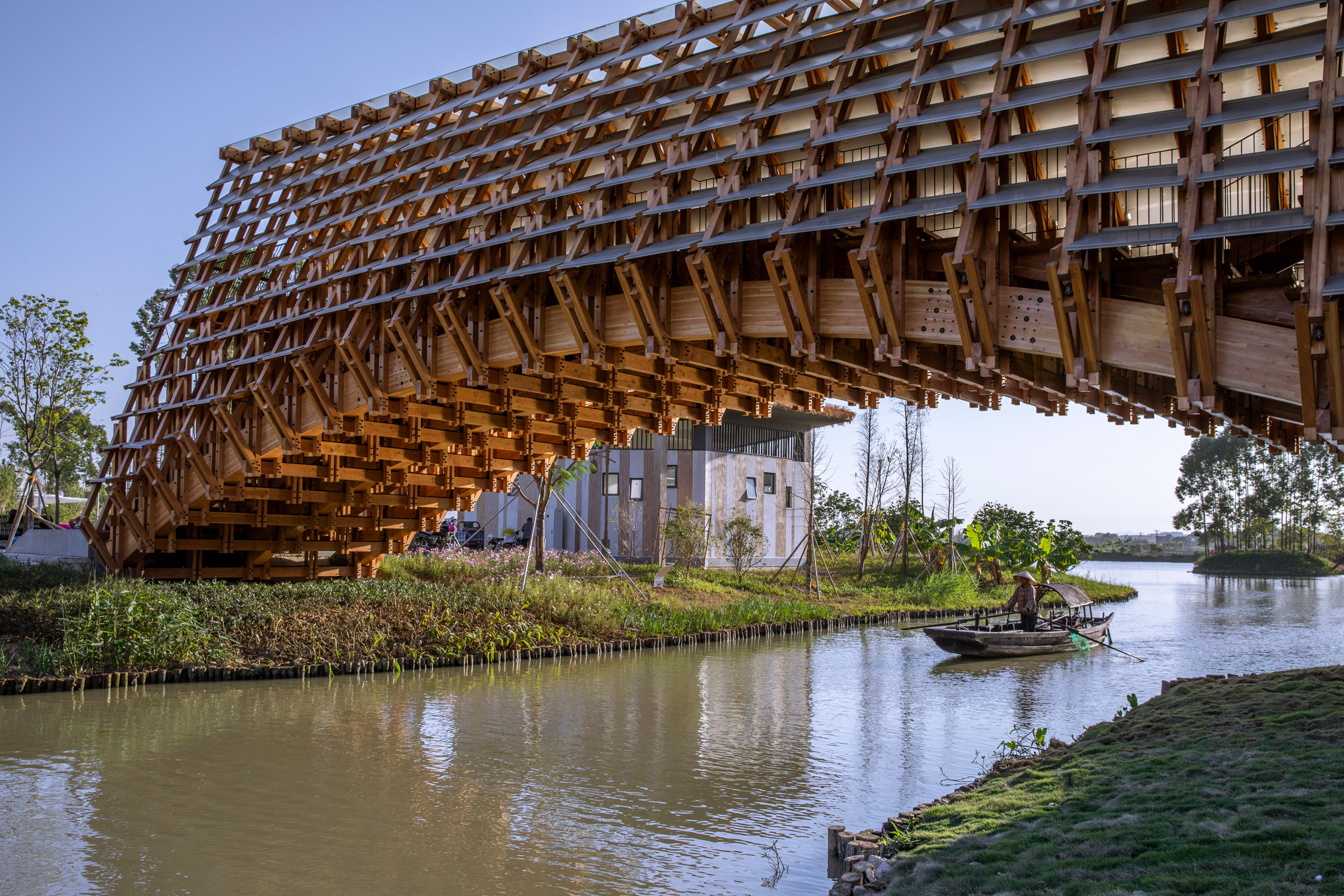 The bridge is arched to allow room for boats to pass underneath
The bridge is arched to allow room for boats to pass underneath
With the area now being rebranded as an eco-tourism resort, Gulou Waterfront, LUO Studio was tasked with creating a new pedestrian bridge in the heart of it.
The Beijing-based studio chose to predominantly use wood, paying tribute to the traditional construction techniques employed in rural villages of southern China where the material is in plentiful supply.
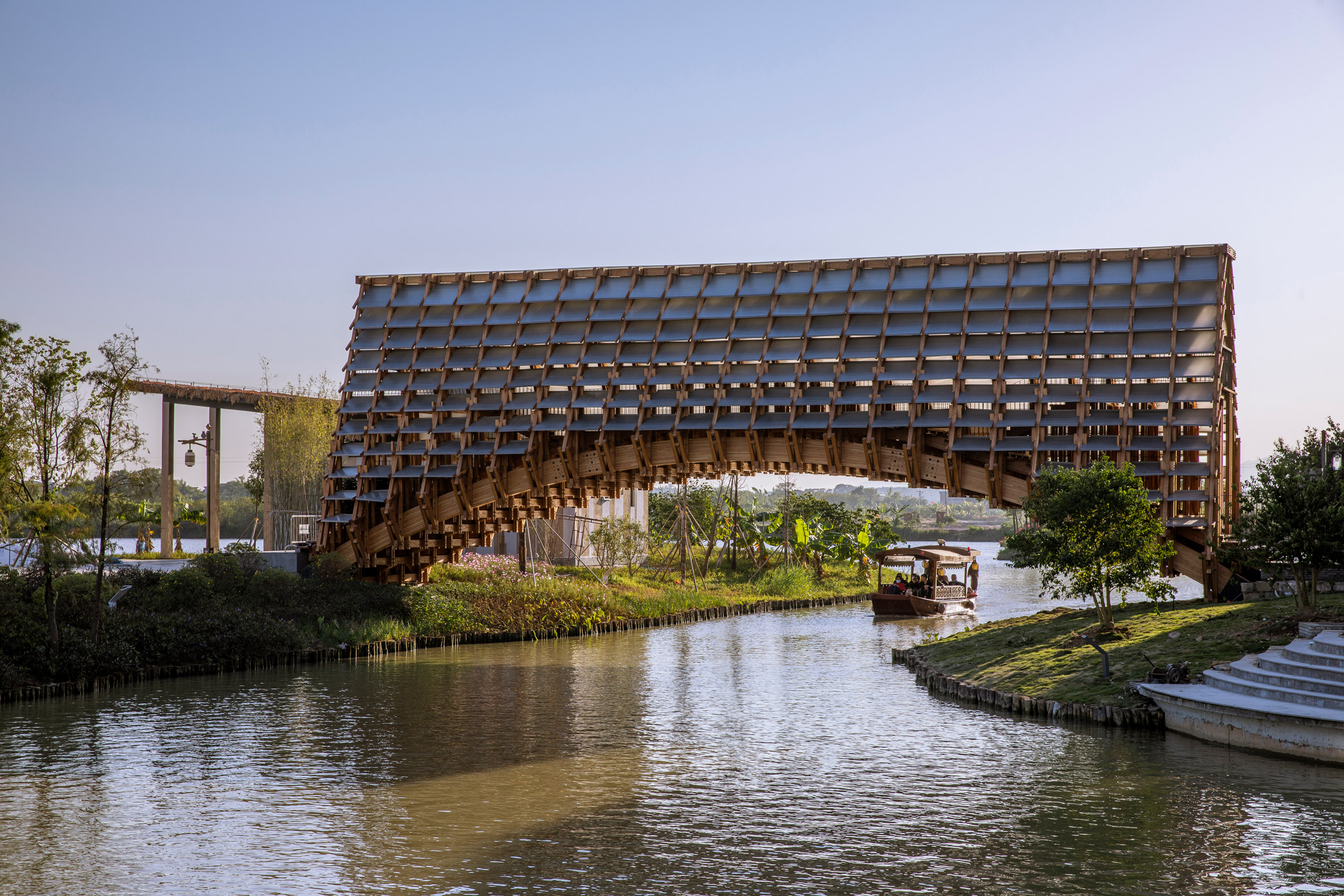 Its structure is made from simple wooden lengths
Its structure is made from simple wooden lengths
It was essential for the bridge to allow enough room for boats to pass underneath. This led to the design of an arch shape, with four metres clearance between the underside of the bridge and the typical water level.
"During the fishing civilisation period, roads were poorly developed, so water systems became the key route for transportation and logistics," said the studio, which is led by architect Luo Yujie.
"Since bridges need to be walkable while also ensuring more space for boats underneath to pass through, traditional bridge construction techniques in China adopted arches to create space for the passage of boats under bridges, and enhance the effectiveness of the structure."
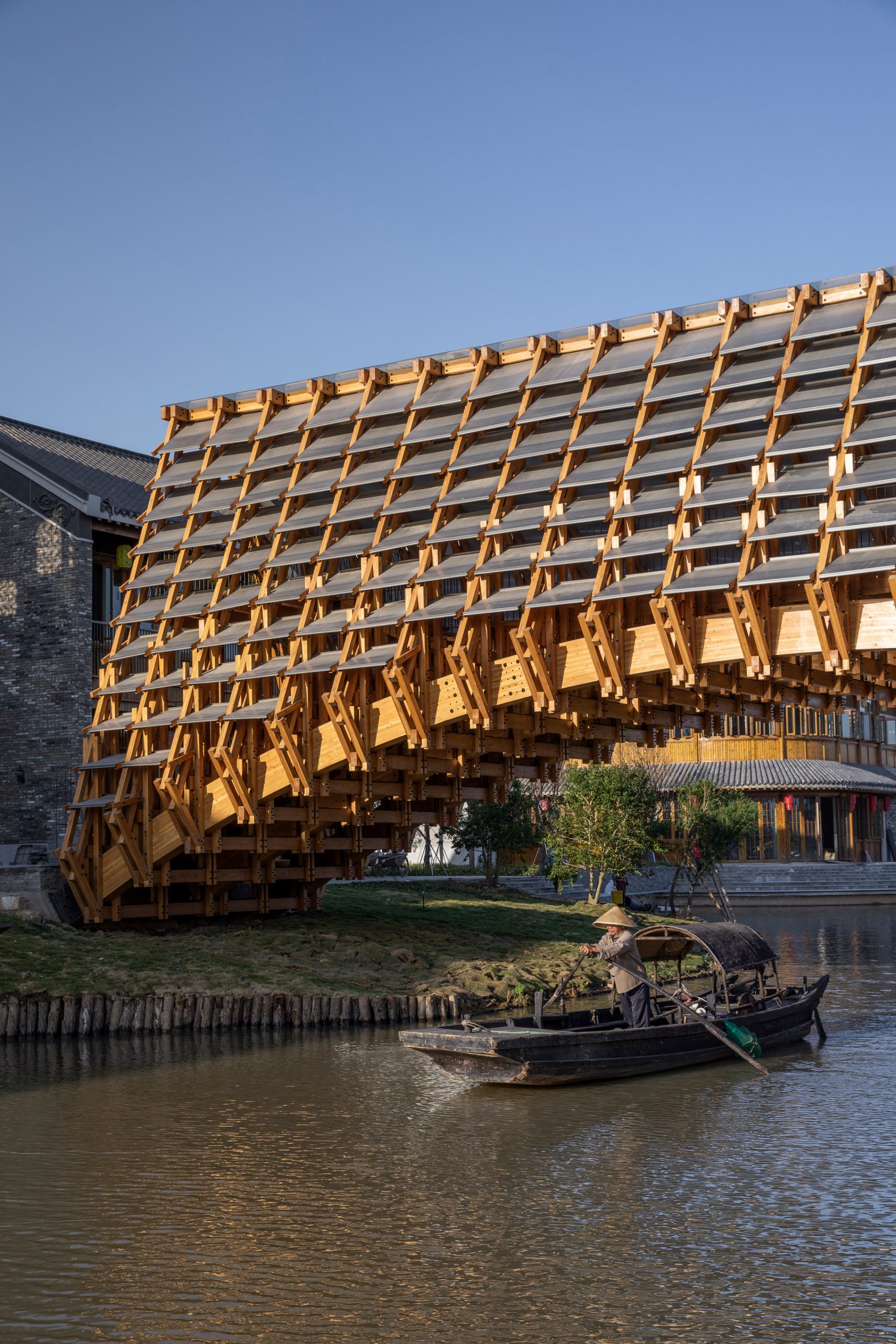 Metal panels provide integrated rainwater drainage
Metal panels provide integrated rainwater drainage
Despite the shape of the bridge, very few of its components are curved. Apart from the three arched beams that form the underside, the structure is almost entirely made from small, regular lengths of pine.
"Small wooden components are interlocked and anchored to the three main arched beams, functioning as sub-beams on upper and lower levels," said LUO Studio.
"In addition, the two ends of these sub-beams are combined with upward components to form a stable triangle of forces."
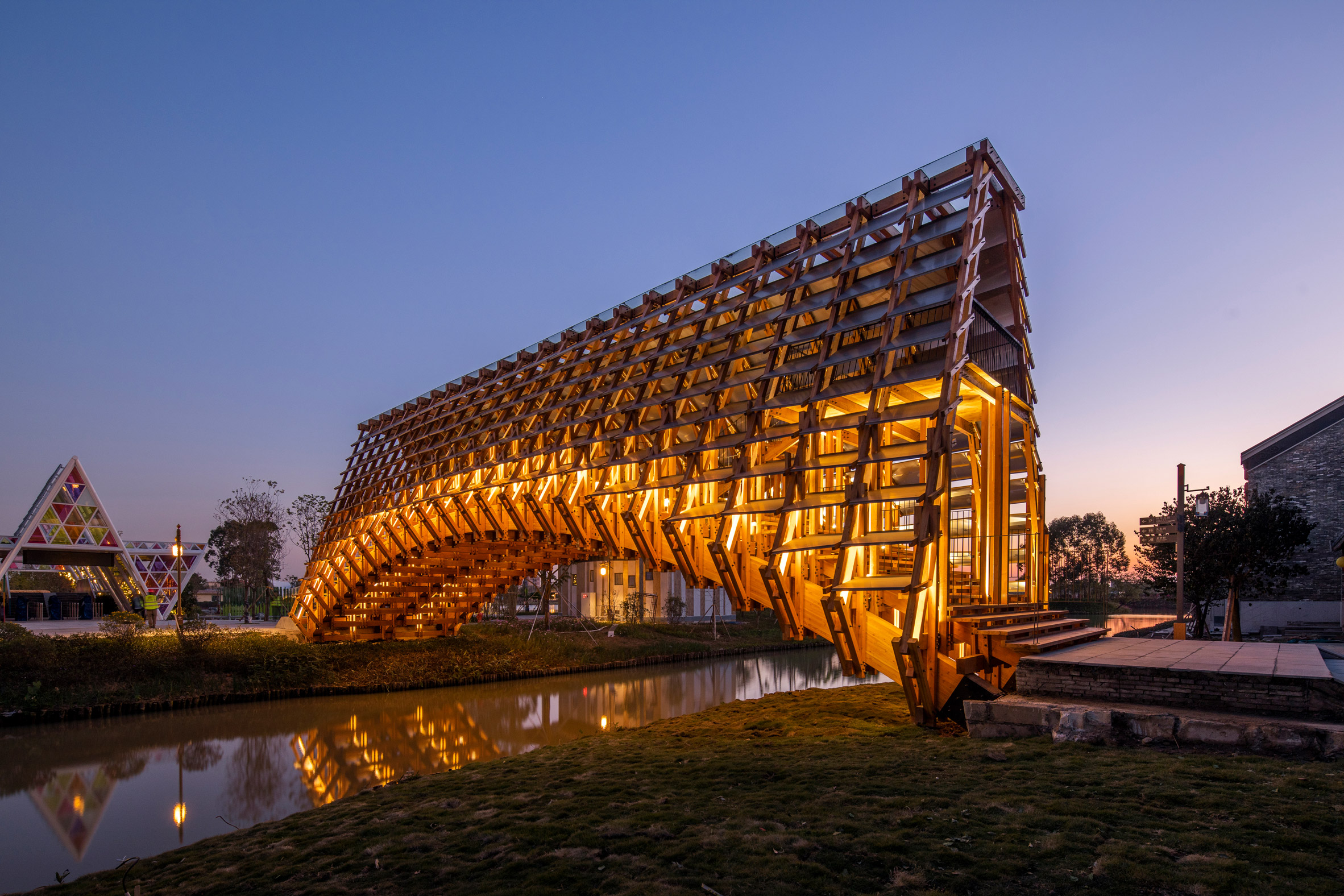 The bridge span is 25 metres
The bridge span is 25 metres
Metal plates are slotted into the wooden framework, which create shelter and provide natural rainwater drainage.
The result is a structure with an intricate structure. Not only does it provide a walkway across the water, but also provides shelter to those crossing.
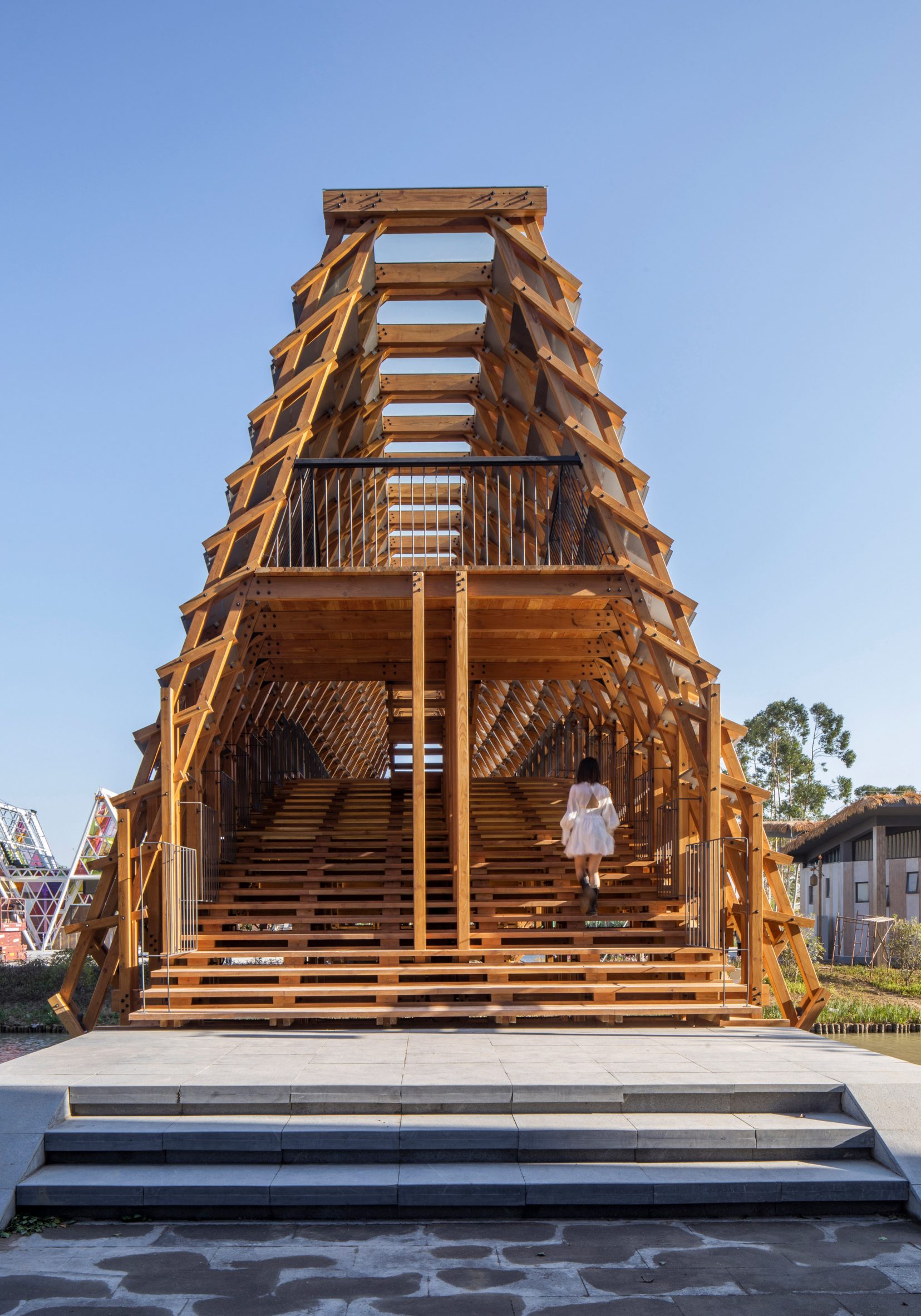 Wide staircases create an inviting route for pedestrians
Wide staircases create an inviting route for pedestrians
On both sides, the wooden bridge's entrance is a wide staircase with open treads. A smaller staircase is set into the centre of each one, leading up to viewing platforms slotted within the bridge's structure.
"This project inherits the construction wisdom of ancient covered bridges," said LUO Studio.
[ 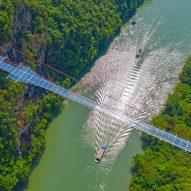
Read:
World's longest glass-bottomed bridge opens in China
](https://www.dezeen.com/2020/09/04/worlds-longest-glass-bottomed-bridge-china-huangchuan/)
"The covered corridor enhances the overall structural stability and protects the arched wooden structure beneath from exposure to sun and rain."
Steel-strengthened bolts give the structure an additional layer of strength.
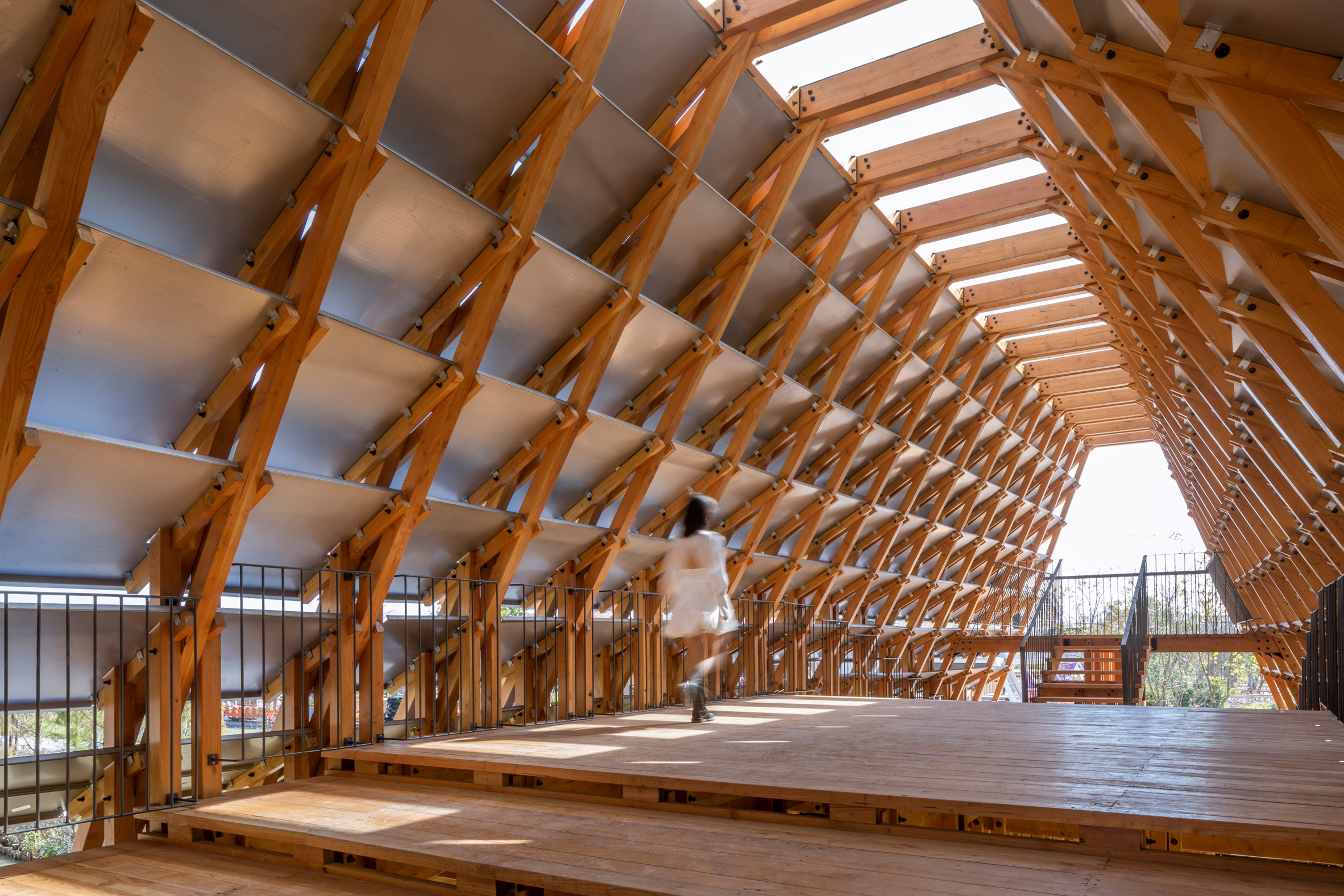 Viewing platforms are slotted into the structure at both ends
Viewing platforms are slotted into the structure at both ends
Timber Bridge in Gulou Waterfront is the latest in a series of innovative projects designed by Luo Yujie, a rising star of the Chinese architecture scene.
His studio won a Dezeen Award for Party and Public Service Center, a community centre built over existing foundations in Yuanheguan, while other projects include the geodesic canopy, Luotuowan Pergola.
With this project, he hopes to inject new interest into an area whose fishing heritage is gradually disappearing.
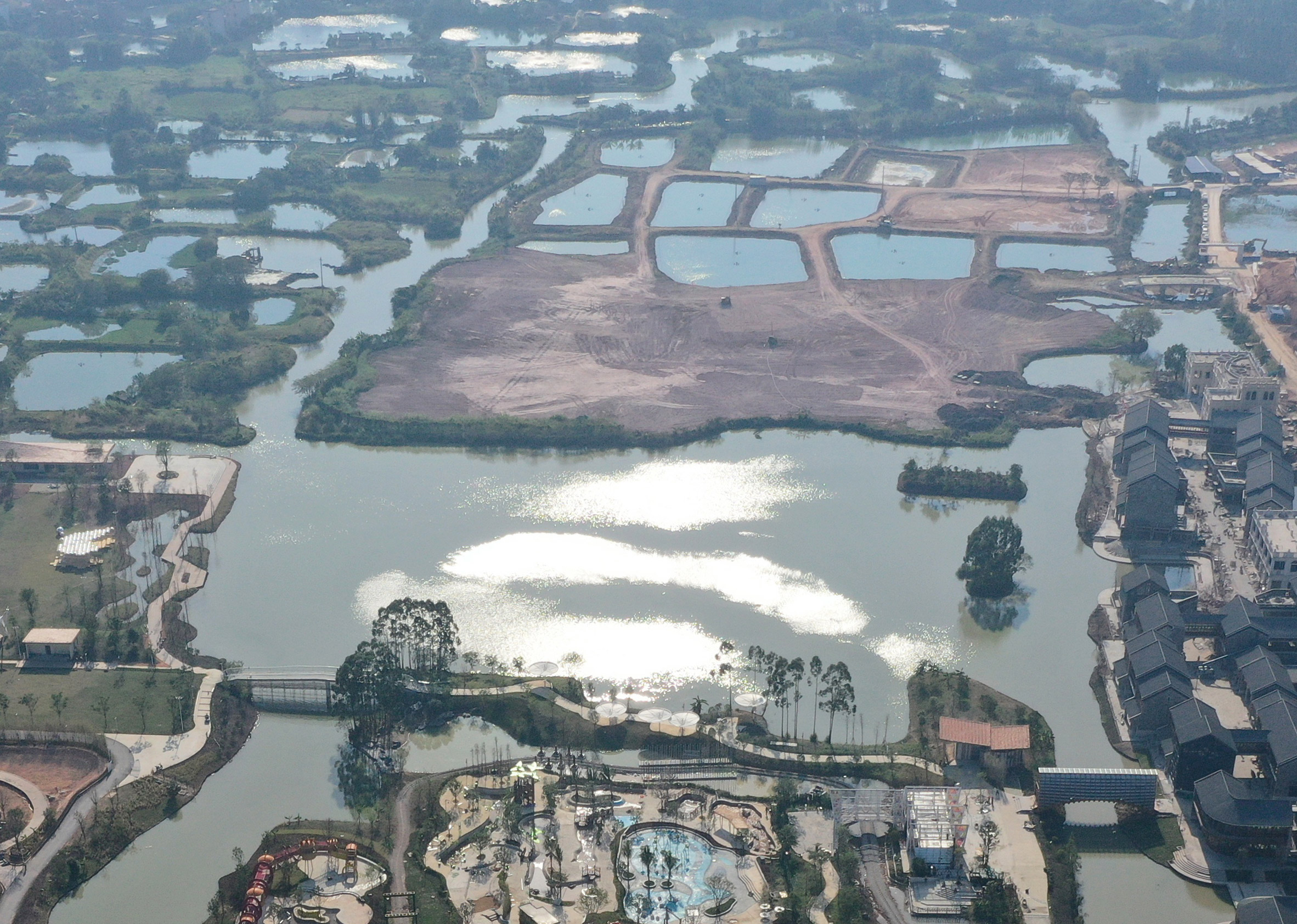 The area is being rebranded as an eco-tourism resort
The area is being rebranded as an eco-tourism resort
It is one of several new bridges that are planned as part of the Gulou Waterfront development, with the aim of making the area accessible for pedestrians without causing disruption to fishing boats.
"While passing through the platforms from two ends to reach the centre of the bridge corridor, visitors can fully experience the light and shadows from the top, feeling calmness and openness in the mind," added the studio.
The photography is by Jin Weiqi and the video is by Jin Weiqi and Xiao Shiming.
Project credits
Client: Jiangmen OCT
Design studio: LUO studio
Design/construction instruction: Luo Yujie, Lu Zhuojian, Wang Beilei
Structural consulting: LaLu Structural Consulting
Construction firm: Shenzhen Zhenhui Architectural Engineering
Wood material suppliers: Shengtehaosen, Kingspine-House
Lighting fixture supplier: Meteor Shower
The post LUO Studio completes intricate wooden bridge in Chinese water village appeared first on Dezeen.
#all #architecture #infrastructure #instagram #chinesearchitecture #china #wood #bridges #woodenarchitecture #luostudio
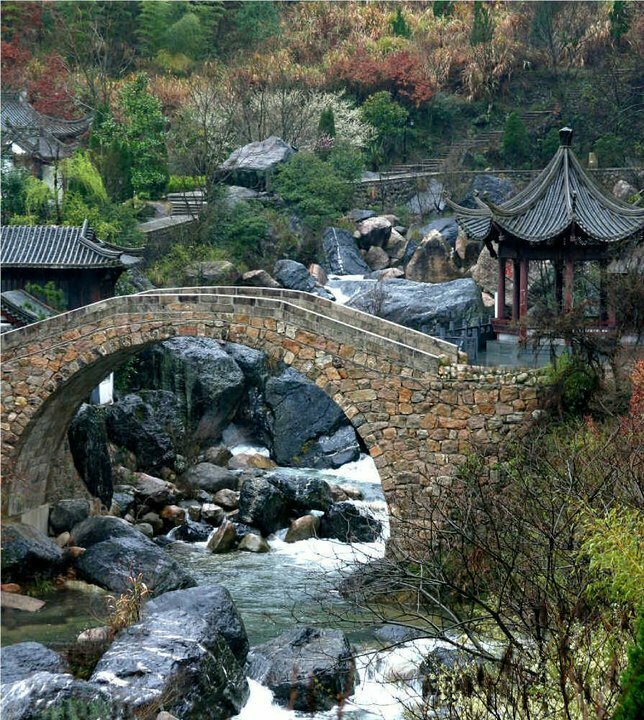
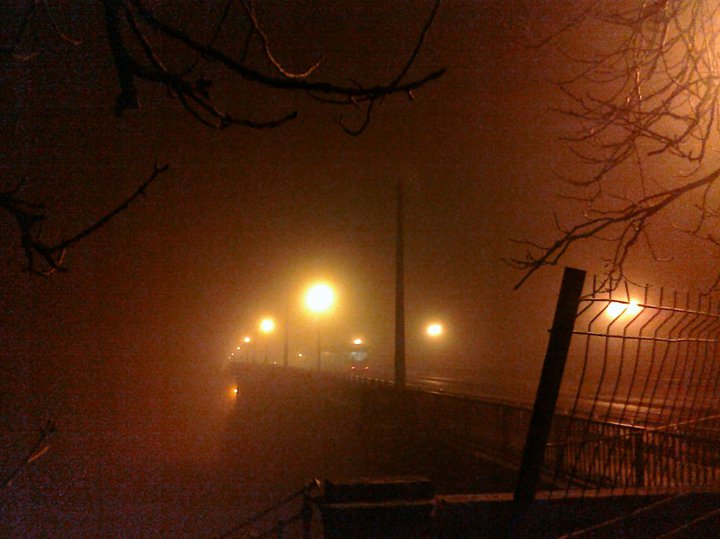
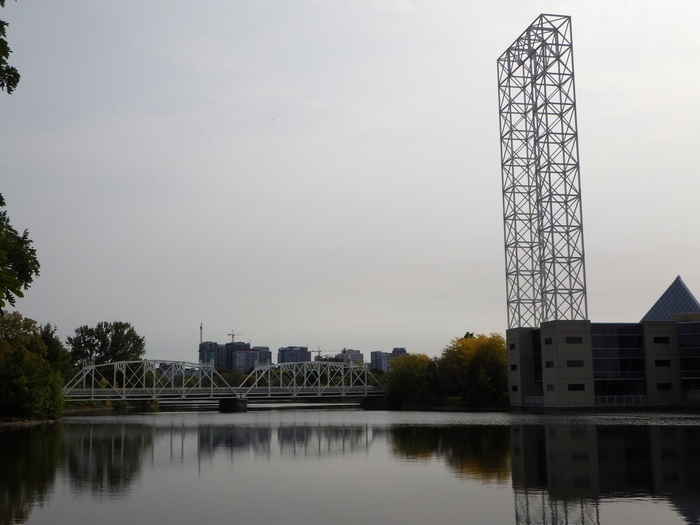
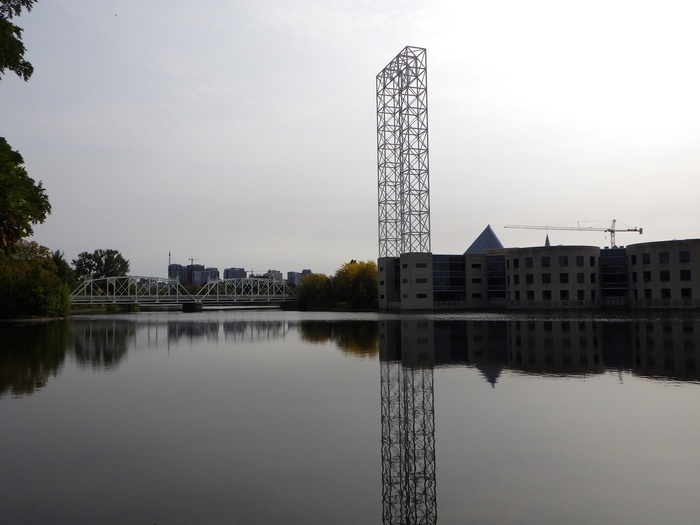
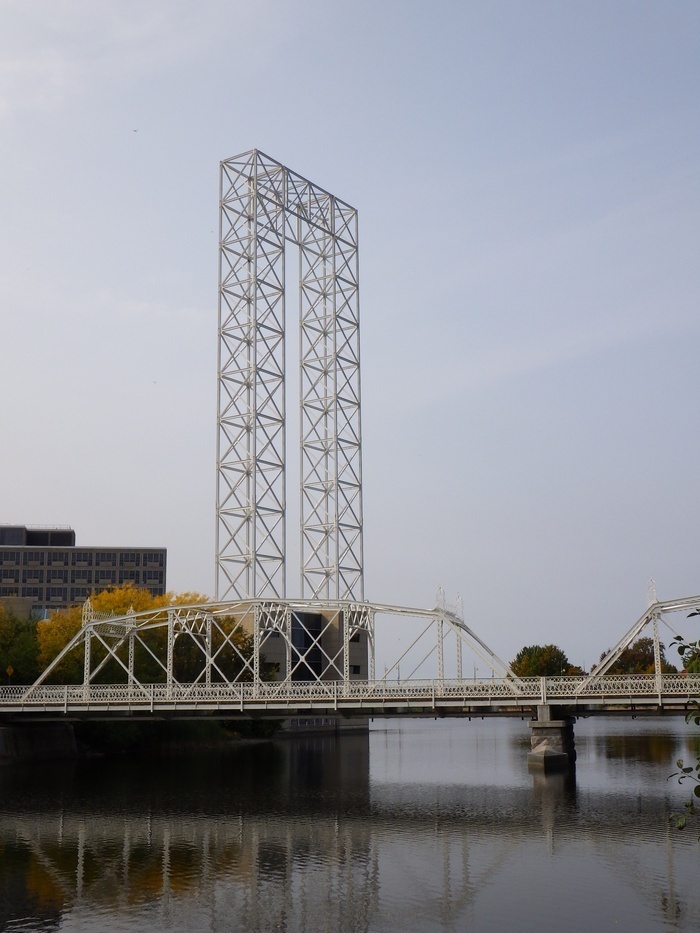


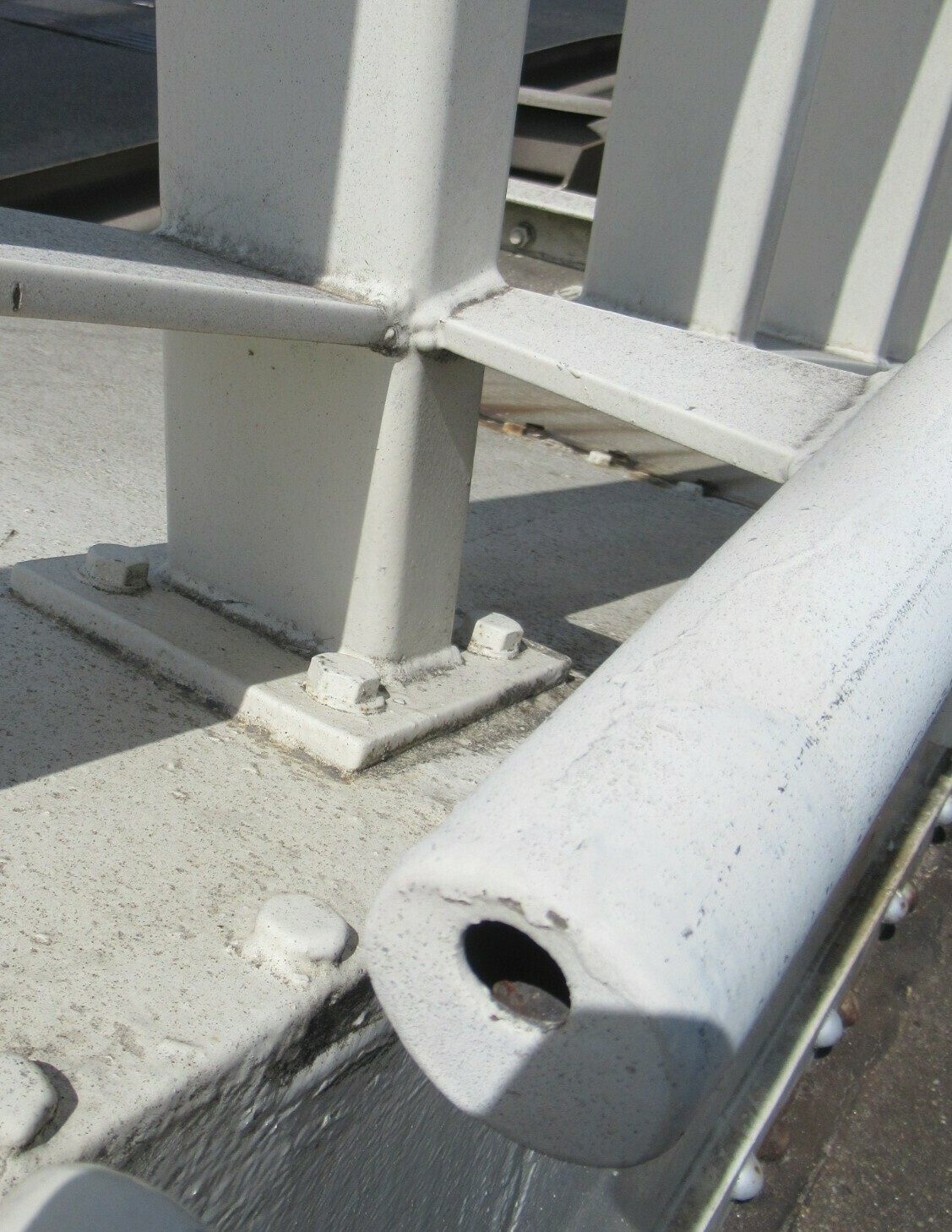
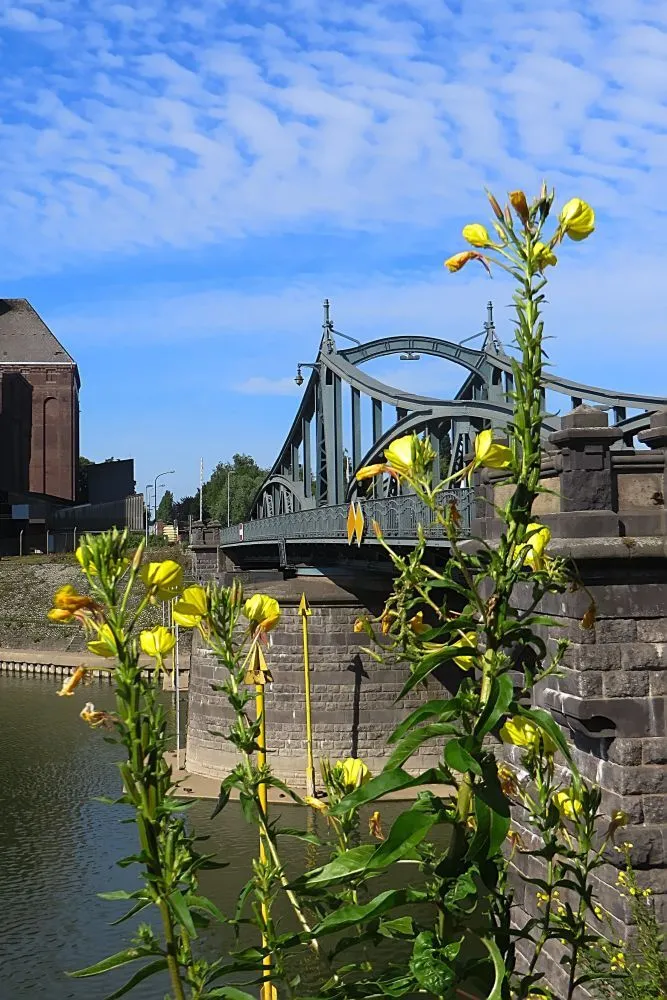
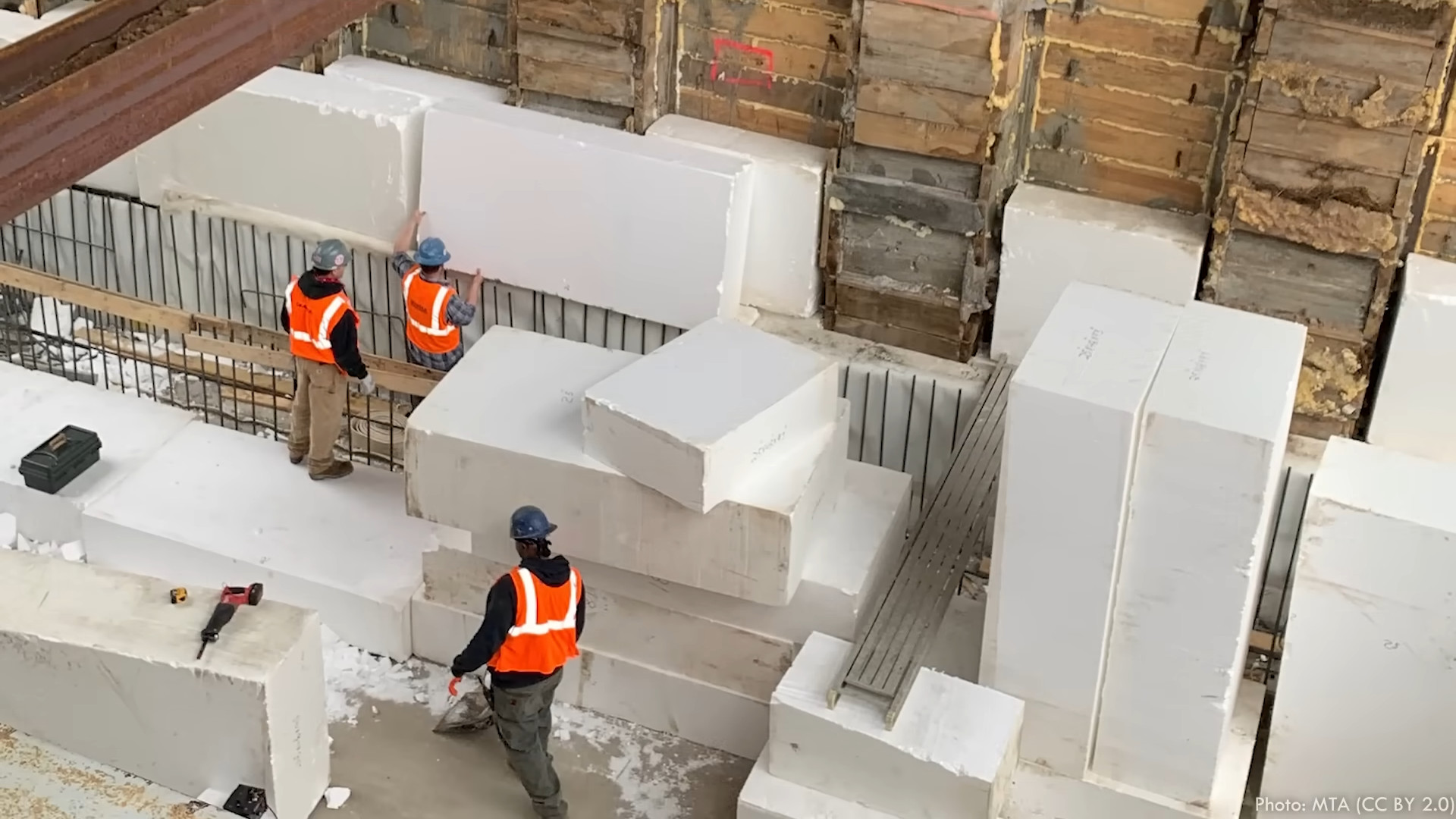




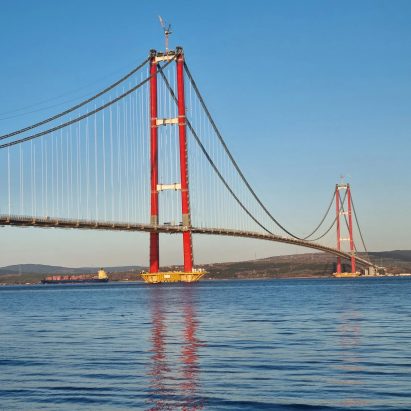
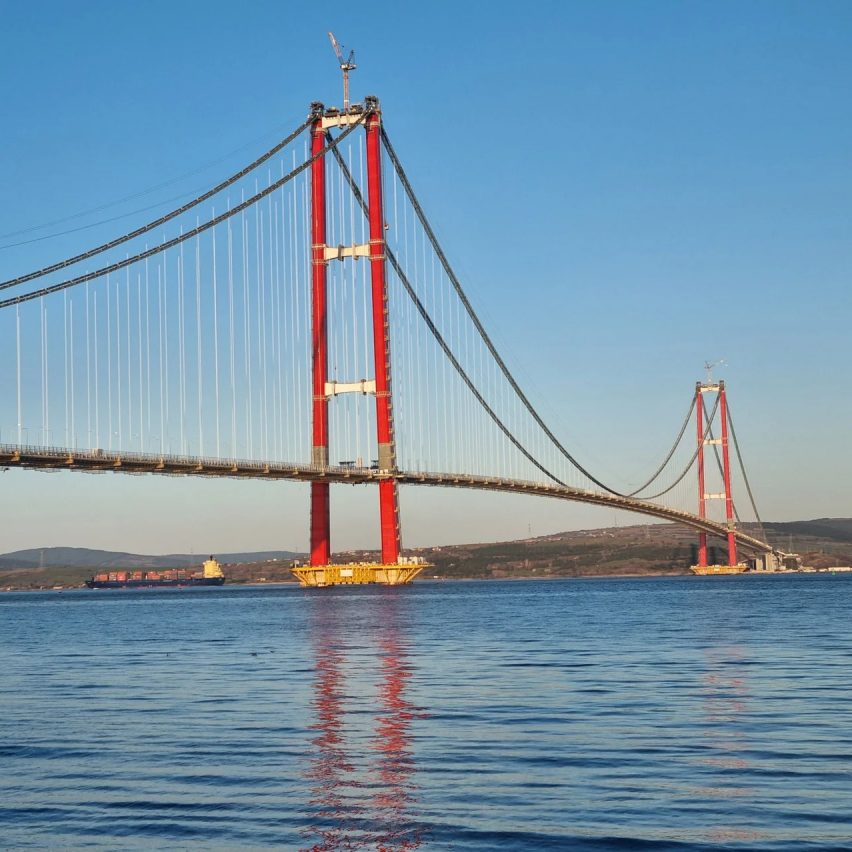
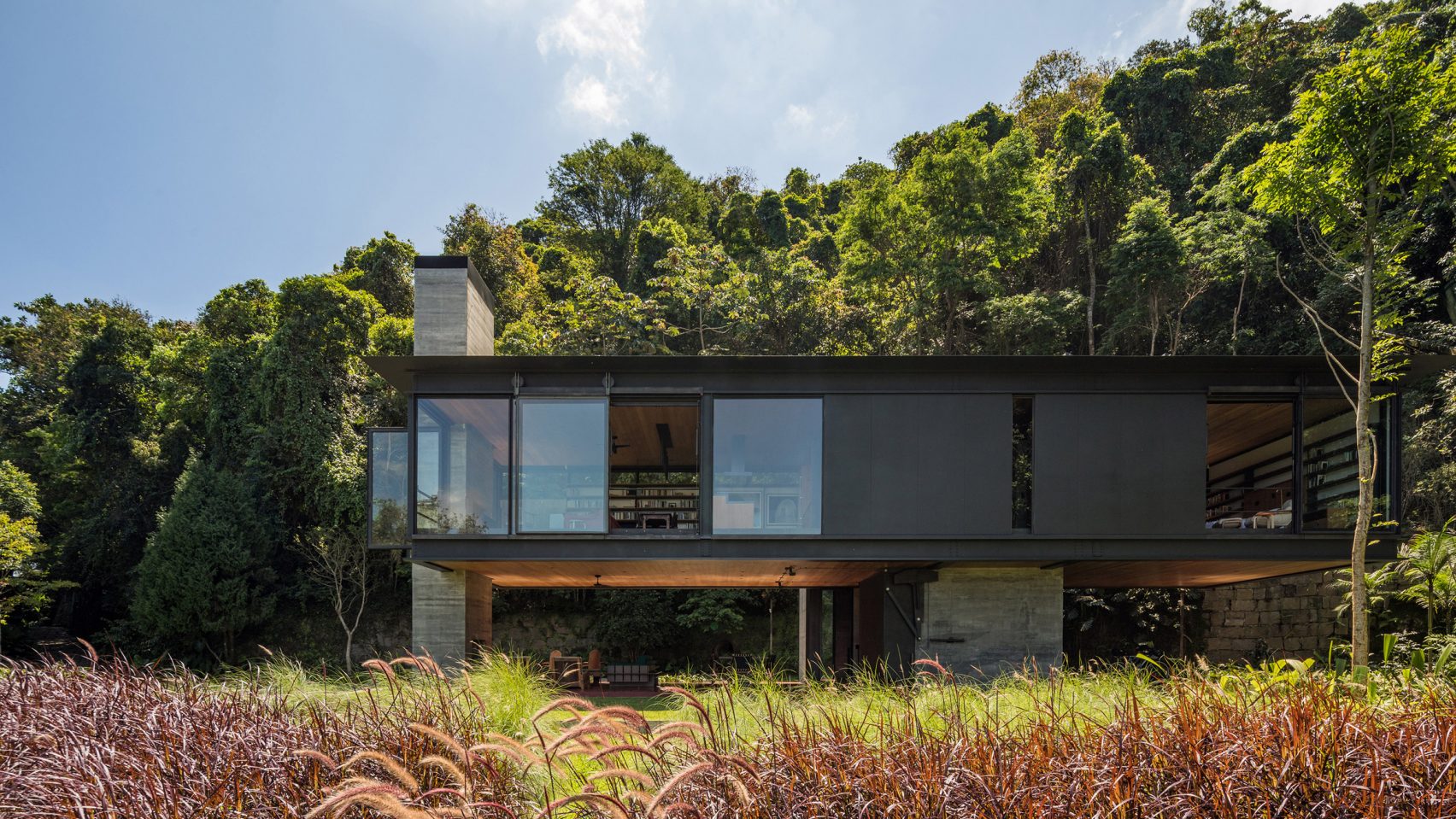
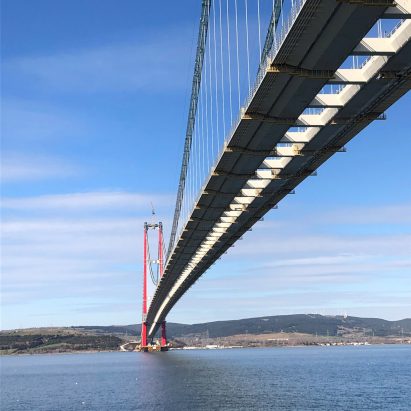
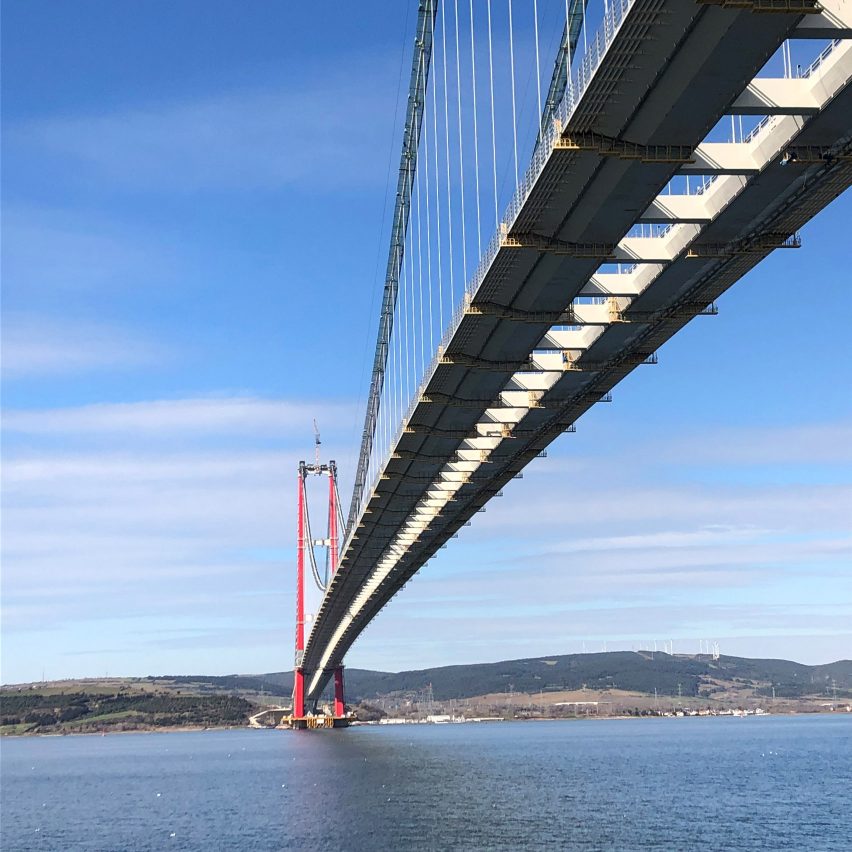
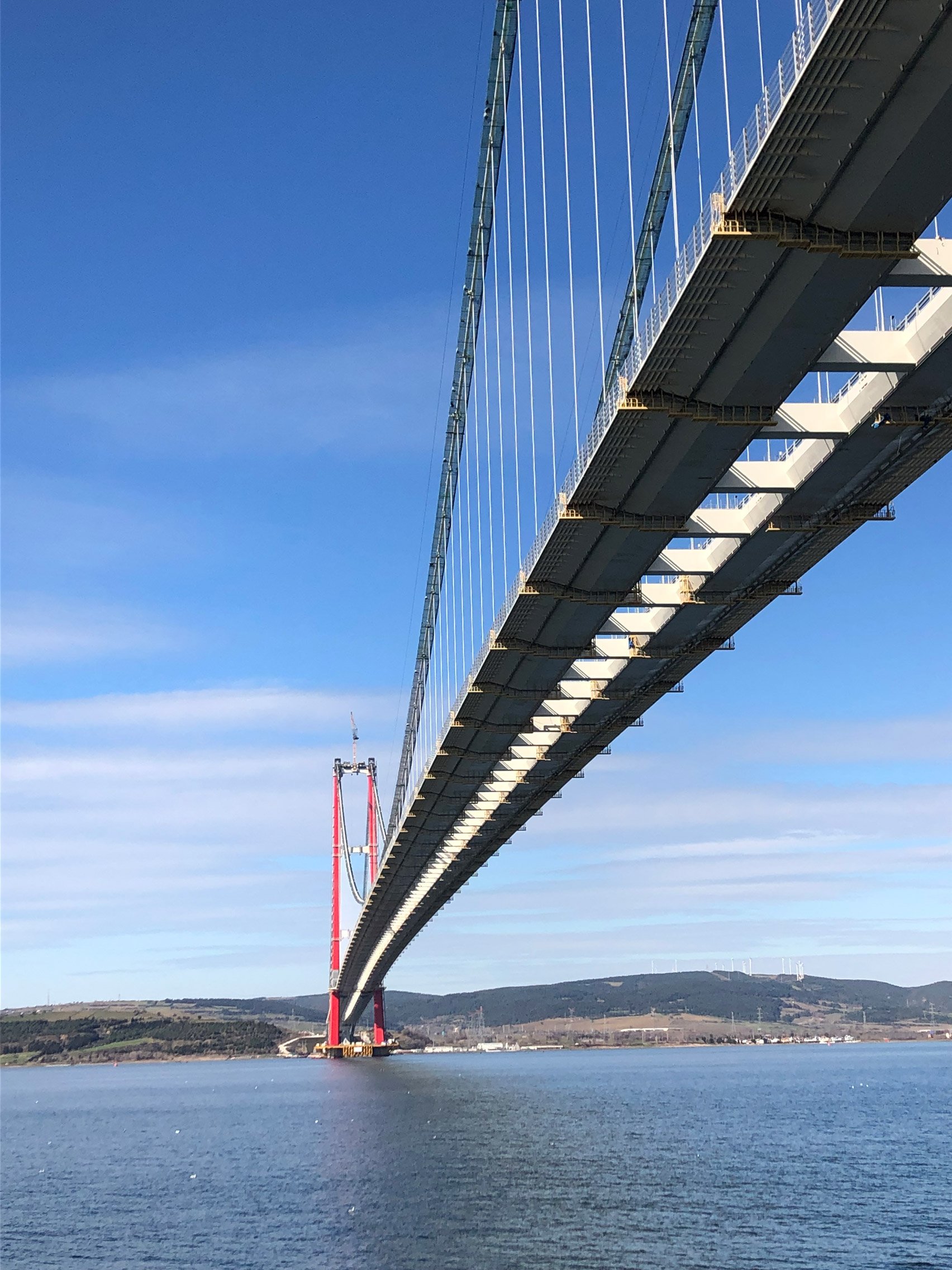 The world's longest suspension bridge has opened in Turkey
The world's longest suspension bridge has opened in Turkey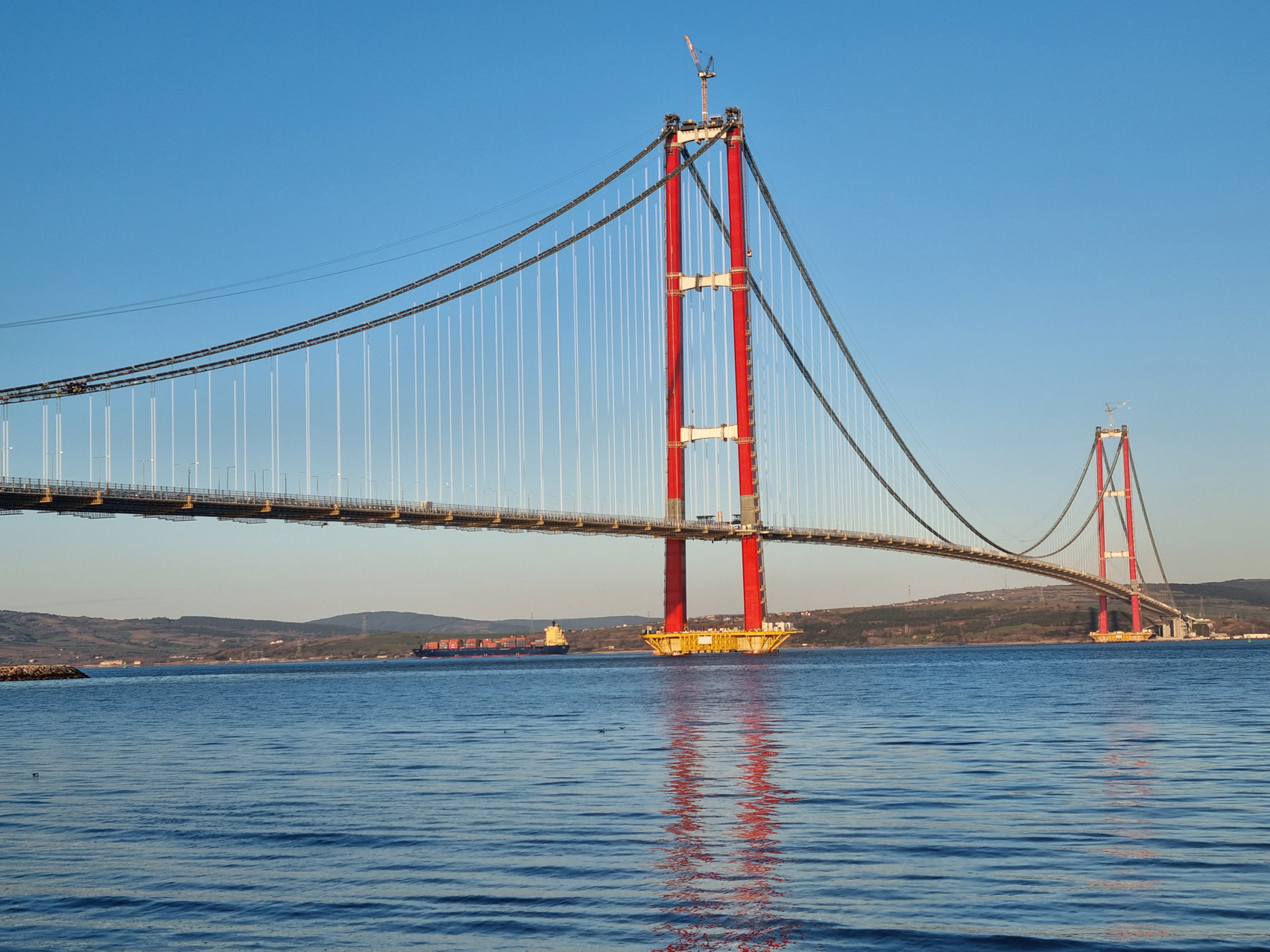 It features two distinctive red towers
It features two distinctive red towers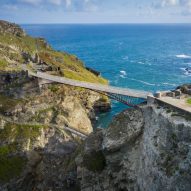
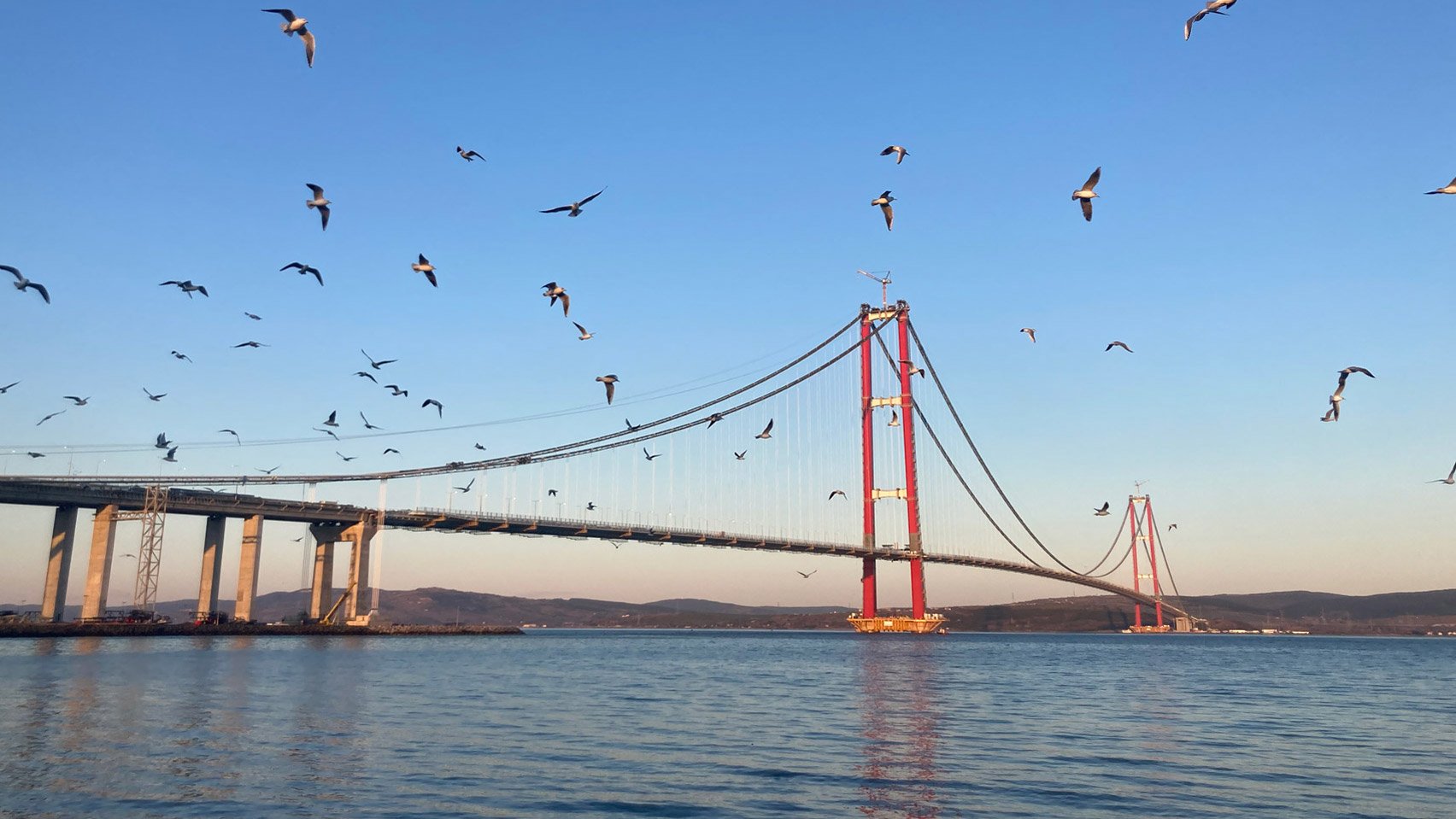


 The bridge is arched to allow room for boats to pass underneath
The bridge is arched to allow room for boats to pass underneath Its structure is made from simple wooden lengths
Its structure is made from simple wooden lengths Metal panels provide integrated rainwater drainage
Metal panels provide integrated rainwater drainage The bridge span is 25 metres
The bridge span is 25 metres Wide staircases create an inviting route for pedestrians
Wide staircases create an inviting route for pedestrians
 Viewing platforms are slotted into the structure at both ends
Viewing platforms are slotted into the structure at both ends The area is being rebranded as an eco-tourism resort
The area is being rebranded as an eco-tourism resort